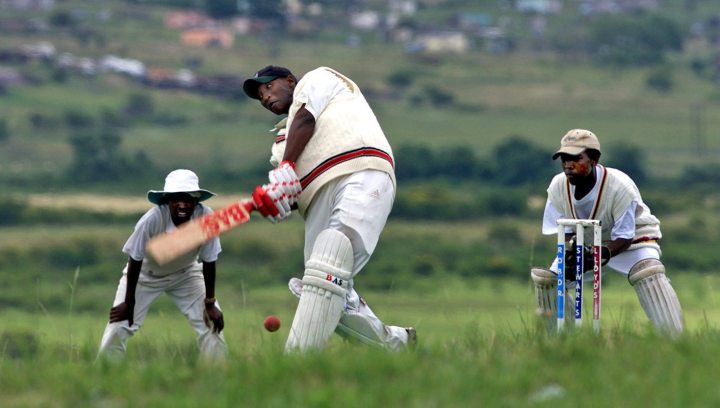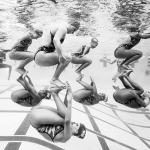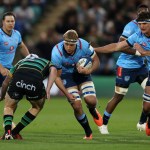Sport
Weighing up nutrition: Feeding transformation

They say an army marches on its stomach; well then, so does the future of a nation’s sporting ambitions. There is no such thing as a successful elite athlete who goes to bed hungry. Could the solution to South Africa’s transformation problem be found on the empty dinner plates of hungry children? By DANIEL GALLAN and CONQA SPORT.
Transformation: an exhausted political buzzword or a clarion call for a better future in South African sport? Whichever way you see it, the undeniable truth is that 21 years after “the Rainbow Nation” was supposedly set in motion, South Africa’s national sports teams do not, for the most part, represent the demographics of the country.
To look squarely at the statistics, of the roughly 51 million South Africans, a mere 8.8% are whites of European descent. At the recent Rugby World Cup, 22 out of a possible 31 players who represented South Africa’s Springboks were white. That is 70% of the squad. Percentages are similarly disproportionate in other prominent national teams, such as men’s cricket (58%), and women’s hockey (83%).
Transformation is a sensitive topic in South Africa, but that is precisely why we need to speak about it. Some bemoan the inclusion of “quota players”, and correctly point out that Bafana Bafana, the often hapless national football team, is hardly represented by any white people (less than 10%), but that neither addresses the problem, nor justifies the issue. We can sidestep and dodge the subject as much as we like, but it is not going away.
Let us give our coaches and sporting federations the benefit of the doubt, and assume they are selecting the best players available to them, and do not have any racist or political agendas. There will always be controversial selections, and swarms of pundits who feel they could do a better job, but let’s start by viewing the demographics of our sports teams without emotion.
Evidence shows that 83% of the national women’s hockey team is white, simply because 15 of the best 18 South African female hockey players are white. According to the Springbok coaches and selectors, only 4 black Africans, out of a population of 41 million people, were good enough to wear the green and gold at the World Cup. Springbok coach, Heyneke Meyer, and his staff have been criticised for their stagnant approach to transformation, as well as a reluctance to show a faith in youth, but as much as one could have argued for the inclusion of an unselected player of colour, the same could have been done for an unselected white contemporary.
Transformation is not happening at a universally accepted speed. One of the main reasons for this surrounds an issue which is a concern for the country at large: nutrition.
Using rugby, the sport which has attracted more attention around transformation than any other, as a case study, the seriousness of the situation becomes evident. As discussed in a previous article, rugby players are getting taller and heavier, and a greater emphasis is placed on the size of athletes.
According to a study published in the Journal of Sports Medicine and Physical Fitness, a strong association exists, at an elite level, between the size of a team (particularly weight), and their chances of victory. Body mass and height are key variables that help predict selection of elite players. As Justin Durandt of the Sports Science Institute of South Africa (SSISA) says, “If there are two players with similar skill sets, a coach is always going to pick the bigger player.” But how does this affect transformation?
The Craven Week is an annual provincial rugby tournament organised for the best under-18 school boys in South Africa, and for the last ten years, SSISA has studied the heights and weights of the players. They found that, on average, black and coloured players were 10kg lighter and 7cm shorter than white players. The average age for all boys was 17.7 years.
There are currently quotas in Craven Week where provincial squads must have 40% black representation; nine players in a squad of 23. The tournament, therefore, appears to be giving players of colour equal opportunities, but in fact, from a weight perspective, they are playing against athletes who are more developed and, therefore, in a relative older age group. This is called creating a false relative age effect. The weight of the average black player at 18 is equal to the average weight of a white player at 16. As we have mentioned before, size is one of the major factors for success in the sport, and explains why many coaches pick white players over black and coloured players for provincial and national teams.
After high school, too many black and coloured players are still playing catch-up while competing in junior, club, or university rugby. Countries like New Zealand have tried to level the playing field, where young boys in some provinces have the option of playing in teams relative to their weight. This, itself, brings in other issues of players of different ages playing against each other, and is not a proven solution to development.
Though clubs have junior structures in place, talented 19 year-old black players, who are the relative size of 17 year-old white players, are expected to tackle, and be tackled by players who are much larger than them. The constant physical hammering they endure might be sustainable for a few seasons, but it greatly impacts the longevity and subsequent progression of these players. According to Durandt, this discourages these young boys from pursuing a career in the sport. He believes this is a contributing factor to the lack of black and coloured players continuing their rugby journeys beyond high school.
The highly talented and overly sized youngsters might be contracted to a union where they can play in the Vodacom Cup or Currie Cup, or play for a university in the Varsity Cup or Shield, but the height and weight disparities generally persist, and so these players are few and far between. The reason why young black and coloured players are, on average, smaller than white players, has to do with the society we live in.
According to SSISA, “The legacy of apartheid has resulted in an uneven distribution of the different ethnic groups across the various socioeconomic strata within South Africa.” The laws of the oppressive apartheid regime are no longer in practice, but the effects are still felt today. Lower socioeconomic categories contain mainly black children, whereas white children are primarily concentrated within the highest socioeconomic strata.
There is a link between the superior physical development of a child and improved socioeconomic status. Better nutrition and improved health means that early development can flourish. Research has shown that the first thousand days from conception to a child’s second birthday are the most important in terms of nutrition. An adult’s height and weight is largely formed in this developmental stage.
Durandt tells us that you don’t have to know the socioeconomic status of a country to understand how accessible good nutrition is for the majority of the population. You don’t even have to look at the country’s Gross Domestic Product, “you just have to look at whether or not the height of the country has increased over a fifty-year period.”
South Africa’s black population, between 1900 and 1970, had a negative growth rate in terms of height. In the same period, the white population grew taller, a trend found throughout developed countries, especially in Europe and North America. One of the reasons for this is poor socioeconomic conditions, which led to poor nutrition in the critical first thousand days and early childhood.
According to Barry Bogin, in a paper titled Secular Changes in Childhood, Adolescent and Adult Stature, it could take up to 150 years to reverse the negative growth (stature) trends in a population, and that is only once socioeconomic conditions have improved. Government has shown impatience with regards to transformation in rugby, and are not going to wait 150 years for a reversal of negative height trends. The South African Rugby Union (SARU) has targeted at least 50% black participation in all domestic and national teams by 2019. This extends to representation both on and off the field, including executive, managerial, and coaching positions in all unions, franchises, and national teams.
All well and good, but if size is the main indicator for success in the game, which it is, and it will take 150 years to reverse the negative height trends shown in this country, then the only solution is to improve the weight of young black and coloured players. This can only be achieved if young black and coloured children have access to better nutrition.
The Ridge School is a private primary school in the affluent northern suburbs of Johannesburg. It is an all-boys school predominantly attended by white children, though all races are represented. It costs R108 969 to enrol a Grade 7 boy (12 to 13 year-old) in the school for one year. An optional additional cost of R9 750 gets your son hot lunches from the cafeteria. They range from chicken pregos to roast beef and potatoes, and always include a healthy dose of fresh salads and vegetables. With school fees like that, it is fair to assume that these children are going home to financially stable households. Here, going hungry means having to wait for mom and dad to get back from work, and prepare another hot meal or microwave a ready-made.
The children of Nooitgedacht Primary School, near Midrand, between Johannesburg and Pretoria, do not enjoy the same benefits. The cost of a child’s education is just under R4,000 ($280) a year. As a result of government pulling funds, the children are no longer fed by the school, and have to rely on their parents or caregivers to feed them. When they get home, the lucky ones get a standard meal of pap, and whatever accompaniments they are able to come by; some spinach, beans perhaps, the very occasional fatty piece of meat. Others are not so lucky. As one mother tells me, many children relied on that meal provided by the school. Now, these children go to bed hungry, wake up hungry, and hunger constitutes a part of their daily life.
Schools like the Ridge are found throughout privileged pockets of the country. These remnants of a colonial past are mostly attended by white children. They do not exclude black and coloured children, only those from poor families who can’t afford the privilege they provide. Schools like Nooitgedacht are found in abundance in rural and urban areas, and are almost devoid of any young white faces.
If you were to randomly pluck a child from each school, who do you think would have the better chance of becoming a Springbok? It is a no brainer. Even if they were both lucky enough to attend a private high school with all the benefits of privilege, the boy from Nooitgedacht will forever be playing catch-up. He will likely not be as big and as strong, and will need to rely on a freakish genetic ability in order to close the gap.
It’s not just rugby that is affected. Former fast bowler, Mfuneko Ngam, was set to become South African cricket’s next big thing. He was young, he had raw pace, and as a black African, was primed to represent the new South Africa in a mostly white sport. It was not to be. After only three Tests, Ngam suffered a succession of stress fractures in his legs. He underwent a series of tests in order to understand why his bones were so brittle. The results were shocking.
“My career was cruelly brought to a stop by not having a sufficient nutritious diet during my upbringing,” he told News24 in 2008. What was shaping up to be an illustrious career was curtailed before it ever got going, and the country was denied a bowling unit of Ngam, Makhaya Ntini, and Shaun Pollock.
“Unless South Africa transforms as a society, we are not going to see natural transformation in our sport,” warns Durandt. No matter how much a poor hungry child wants to be a Springbok or a Protea, as long as he lives in poverty and is unable to eat well, he will face an uphill battle.
Transformation is an issue concerned with race, but it should be an issue concerned with the socioeconomic conditions of the country. The majority of black players like Siya Kolisi (Grey High PE), Sibusiso Sithole (Queens College), and Nizaam Carr (Bishops), who play at the elite levels in South African rugby, went to well-funded schools with established rugby programmes. The elite schools that act as breeding grounds for national athletes are mostly attended by white children. These are the young men and women who have access to quality nutrition, as well as elite training facilities and coaching. It is no wonder that the majority of our athletes in this country, who are talented enough to represent on the world stage, are white. As long as this disparity persists, the demographics of the national teams will remain skewed.
Earlier this year, speaking at SARU’s Strategic Transformation Plan (STP), CEO Jurie Roux said, “Nutrition is our biggest challenge. If his (the player’s) first problem is a meal, where is rugby on that list?” Durandt and SSISA have worked with SARU, and implemented a strategy to improve nutrition in rural communities for elite under-16 and under-18 players. A porridge like Performance Meal was made available to previously disadvantaged players from each union who had been selected to join the elite training squads. Unfortunately, this programme only lasted a year. “The problem was SARU could not sustain it financially,” Durandt says. Academies have been created by SARU in several provinces, to support players from previously disadvantaged areas, and even placed a number of mobile gyms in rural communities. The problem is that these interventions mostly target players over the age of 18.
It is easy to understand why government is not happy with the glacial pace at which South African sport has transformed. The ruling African National Congress (ANC) has an obligation to show the majority of this nation that the oppressive past has been unequivocally eradicated. The STP makes its targets clear, and the higher ups in SARU and government have stated that there will be dire consequences, should these expectations not be met.
Coaches and selectors at Currie Cup, Super Rugby, and Springbok levels have been the ones to shoulder most of the blame. However, black and coloured representation is comparable throughout the tiers of elite rugby in South Africa. The Springboks will struggle to improve the percentage of black and coloured players on match day, if Super Rugby teams don’t improve. The same goes for representation in Super Rugby, if Currie Cup teams are not better represented.
“We need to be realistic about what we are trying to achieve, and the timelines need to be realistic,” says Durandt, who supports transformation. “There are so many issues that impact transformation, nutrition being a major one, and only implementing quotas is not going to fix things.”
As long as South Africa’s national sports teams do not represent the demographics of the country, the controversial issues of transformation and quotas will persist. The catch is, unless solutions are implemented at grass roots, and the crises surrounding nutrition and other socioeconomic factors for young people is remedied, South Africa will continue to use a bandage to treat a festering wound. DM
This article first appeared on Conqa Sport and has been republished with permission. QONQA Sport, is an elite sports knowledge sharing organisation. CONQA Sport hosts an annual Elite Sport Summit in Cape Town, where leading sports practitioners from around the world share insight and knowledge. Through original content, CONQA Sport seek to challenge conventional sports writing, while pushing the boundaries of human performance through knowledge sharing events and consulting services.
Photo: Local hero Mfeneko Ngam bats for his village during the “Amacal’egusha” (half a sheep) village cricket tournament near King Williamstown, December 27, 2002. REUTERS/Mike Hutchings.


















 Become an Insider
Become an Insider